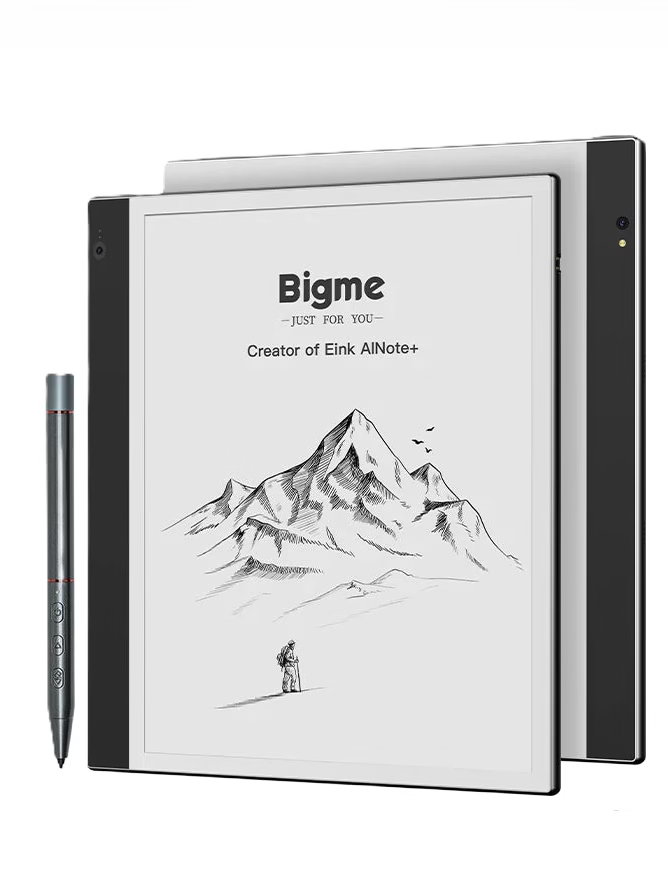The best fictional worlds aren’t the ones explained in exhaustive detail. The most immersive storytelling often happens in the negative space, where readers feel as though they’re walking side by side with the fictional characters.
That’s the quiet art of minimalist worldbuilding – it gives just enough for the world to become ‘real’, letting readers fill in the blanks with their own imagination. In this post, we will explore how writers create believable, layered worlds without slowing down the story.
The Power of the Unseen Iceberg
In an era of endless information and the fear of missing out, readers appreciate immersion over exposition, especially in fast-paced genres or literary fiction. They want immersion, not exposition. For writers, however, creating an illusion of fullness with minimal description takes skill and control. They need to say everything without overwhelming your reader, by enticing them to discover.
Ernest Hemingway called it the ‘iceberg theory’ or the ‘theory of omission’:
If a writer of prose knows enough about what he is writing about, he may omit things that he knows and the reader, if the writer is writing truly enough, will have a feeling of those things as strongly as though the writer had stated them.
The idea is that the deeper meaning of a story should be implicit, with only the tip visible above water. This principle can be applied to worldbuilding: readers don’t need to know every detail of your magic system, every historical battle, or every rule of your society. They need to feel the weight of these things beneath the surface.
Consider Kazuo Ishiguro’s Never Let Me Go. Ishiguro drops us into a seemingly idyllic British boarding school, revealing its horrifying purpose through casual conversations and half-remembered lessons. We piece together the truth about Hailsham through what the students don’t say, through euphemisms like ‘donations’ and ‘completing’, as well as through averted eyes and careful language. The world feels devastating precisely because it’s revealed in whispers.

On the indie side, Andy Weir’s The Martian (originally self-published before its traditional release) also demonstrates this brilliantly. We don’t get lectures about how the Ares missions work. We get Mark Watney solving problems, and in those solutions, we understand the technology. ‘I’m pretty much fucked’ tells us everything about both the stakes and the tone without a single paragraph of preamble.
Below are a few techniques that help writers use the iceberg theory.
Advertisement: BigMe – The Best E-Ink Tablets For Reading And Note-Taking
1. Begin in Media Res: Trust the Reader to Catch Up
The phrase in media res means ‘in the middle of things’. Starting your story there isn’t just a stylistic choice; it also shows trust. You’re inviting the reader to join a moment already in progress and piece together what came before.
An opening might explain:
“The war had lasted three years, and the city was half in ruins.”
Or it can say:
“Dust from the second bombing still hung in the air as Hondell stepped over the collapsed bridge.”
In one line, we know there’s a war, that the city has been bombed more than once, and that Hondell is still moving forward. The exposition is embedded in action and conveys more information in an engaging manner.
N.K. Jemisin’s The Fifth Season opens with second-person narration and a world-ending catastrophe, then backtracks to a woman realising her son is dead and her daughter is missing. We don’t know what Orogenes are. We don’t know what the Stillness is. We don’t know why the world keeps ending. Jemisin trusts us to keep reading, to collect context clues, to become active participants in understanding.
Samantha Shannon’s The Bone Season begins mid-action with Paige Mahoney already working as a clairvoyant criminal in an alternate 2059 London. Shannon doesn’t pause to explain how voyancy works or what Scion is. She shows us Paige moving through syndicate territories with practised caution, reading auras instinctively, her body’s automatic responses to authority. We become citizens of this world through immersion, not explanation.
When you start in media res, every detail matters. Choose images or dialogue that carry hints of the world’s rules, recent events, or stakes. Give the reader just enough to feel oriented and curious.
2. Let the Setting Do the Storytelling
Settings can do more than just show scenery; they can reveal who lives there and what the culture values. A few precise details can replace whole paragraphs of explanation: A polished office with one dead plant says something about the person who works there, just like a medieval town where every window is barred hints at fear or oppression.
Instead of describing your world like ‘a harsh desert planet’, try using specific sensory details that imply a story:
“Wind slipped through the bones of old machines half-buried in sand.”
That single image suggests decay, history, and the intersection of human presence and time without an explicit explanation.
When Tade Thompson describes Rosewater in his novel of the same name, he doesn’t explain the alien biodome. He shows us a Nigerian city that has grown around it, where people line up for miracle healings, and psychics like Kaaro navigate the xenosphere. The setting description is the exposition since we understand the biodome’s significance through its effects on people.
Zen Cho’s Sorcerer to the Crown introduces us to Regency England’s magical society through Zacharias, England’s first Black Sorcerer Royal. Cho doesn’t talk directly about magical politics, but through microaggressions, surprised glances, and the weight of unspoken rules. The world reveals itself through the gap between polite words and hostile intent.
Let the world speak for itself, and your readers will have a chance to feel like explorers rather than students.
3. Use Character Reactions as Natural Exposition
Readers learn a world’s rules by watching how characters behave within it. Their comfort, fear, or surprise communicates what’s normal or unusual.
If characters walk through a haunted forest chatting and laughing, we instantly know the supernatural isn’t a threat to them. Likewise, if customers go silent when a soldier enters a café, we understand the power dynamics without needing a history lesson.
This technique also keeps exposition rooted in emotion. The reader doesn’t absorb facts; they experience the weight of the world.
Even small gestures can carry meaning. A character flinching when someone mentions ‘the lottery’ tells us more about their society than a paragraph describing its brutal rituals.
Madeline Miller’s Circe uses this technique masterfully. When Circe transforms her first man into a pig, her shock at her own power tells us witchcraft isn’t common among gods. When her father reacts with disgust to her voice, we understand divine hierarchy without a textbook on Olympian social structure.
In V.E. Schwab’s A Darker Shade of Magic, we learn about parallel Londons through Kell’s practised movements. His magical coat with its many sides, the contraband he smuggles, his instinctive checking of pockets: these details tell a story of forbidden travel between worlds without a single geography lesson.
4. Weave Backstory into Movement
Every writer faces the challenge of conveying background information without halting the plot. The key is to integrate backstory into physical or emotional motion.
Instead of pausing the scene for a flashback, embed memory in the present moment:
“She adjusted the cracked insignia on her sleeve – the last thing the academy had ever given her.”
That one line tells us there was an academy, she left it (or was expelled), and there’s still emotional weight attached to it. The past enters naturally into the now.
Think of exposition as seasoning, not a meal. Sprinkle it lightly and evenly, and it enhances the flavour of your story.
5. The Power of the Telling Detail
Minimalism doesn’t mean confusion. Readers should always know what’s happening in the scene, even if they don’t yet understand the full picture. The best minimalist writers control when and how information arrives.
You can guide curiosity by revealing one clear fact for every mystery you create. For example, if you introduce a strange machine in the corner of a room, immediately show what it does, not necessarily what it is.
“The gears clicked once, and the clocks started moving backwards.”
Now the reader knows it’s powerful, maybe dangerous, and definitely important. The unknown becomes intriguing rather than frustrating.
Ursula K. Le Guin demonstrated this throughout her career, perhaps most notably in The Left Hand of Darkness, where the detail of Gethenians entering ‘kemmer’ (a periodic sexual state where they can become either male or female) suggests an entire culture, psychology, and political system different from our own.
Indie author Travis Baldree, in Legends & Lattes, shows us an orc hanging up her sword to open a coffee shop. The worn handle, her instinctive reach for it when trouble appears, the way she knows every nick in the blade are details that tell a story of decades of violence without a single flashback battle scene.
Sometimes one specific, concrete detail can suggest an entire system.
6. Use Dialogue as a Worldbuilding
Natural dialogue can replace large chunks of exposition. People rarely explain things they already know, so real conversations in fiction hint at context instead of stating it outright.
Compare:
“As you know, Captain, the rebellion began three years ago when the taxes increased.”
to
“Three years, and rebels keep saying higher taxes make them starve – but they’re still alive, aren’t they?”
The second version carries the same information and more, but feels authentic and active. It lets the reader infer the rest.
In Martha Wells’ All Systems Red, the Murderbot’s sarcastic internal monologue provides worldbuilding in fragments: “I could have become a mass-murdering bot” implies a history without explicitly explaining it. References to ‘the Company’ and ‘bond-contracts’ build a corporate dystopia through bitter asides, not lectures.
Indie author Blake Crouch demonstrates this perfectly in Recursion. Characters discover the rules of memory-technology alongside readers, their confusion and theories serving as natural exposition. Scientists theorise, argue, and make mistakes, exactly as real people would, and we learn the rules through their scientific process.
7. Learn from Masters of Subtlety
This is not exactly a technique, but it’s a valuable practice that’s more than just a simple tip. To build a minimalist world is to master implication, and you’ll gain a lot of insights only by studying those who succeeded before you. Observe how they chose each word for its ripple effect, each sensory detail, each reaction, each silence.
Just a warning: this task is not easy because while reading a great piece of minimalist work, we sense histories that were never written, cities that were never mapped, and emotions that were never confessed, without even realising it.
You can start with the authors mentioned in the techniques above, since they already give you a hint of what to look for.
Advertisement: Shop the Cutiest Candle Holders You’ll Ever Find
Practical Tips for Minimalist Worldbuilding
- Start late, leave early. Begin your scenes as close to the action as possible and end them before explaining the aftermath. Trust readers to infer.
- Kill your exposition ‘darlings’. That beautiful paragraph about your magic system? That detailed history of the war? If it stops the story, cut it. Find three places to scatter those details across twenty pages instead.
- The pronoun test. If you can replace a fantasy term with a pronoun and the sentence still makes sense, you don’t need to explain yet. ‘She checked her commlink’ works better than ‘She checked her commlink, the quantum-entangled communication device standard-issue to all Guild members since the Treaty of Proxima’.
- Use familiar contexts as scaffolding. Readers understand job interviews, family dinners, first days at school. Frame your worldbuilding around these universal experiences. We learn about the world of The Goblin Emperor through Katherine Addison’s court politics because we understand office politics.
- Let characters be wrong. In S.A. Chakraborty’s The City of Brass, Nahri has misconceptions about djinn that get corrected through experience. Her wrong assumptions create opportunities for natural worldbuilding that doesn’t feel like teaching.
- Default to the specific. Don’t write ‘The war had lasting consequences’. Write ‘Grandmother still flinches at the sound of airships’. One is abstract, the other implies entire histories.
When More Is More
Minimalism isn’t always the answer. Some stories, like Brandon Sanderson’s intricate magic systems or J.R.R. Tolkien’s linguistic worldbuilding, glory in their detail. The key is intentionality. Sanderson’s laws and Tolkien’s appendices serve their stories because epic scope and systematic wonder are the point.
But for most fiction, especially character-driven stories, less exposition means more room for emotion, conflict, and transformation. The goal isn’t to withhold information as a trick, but to trust that what you show is enough.
The Reader’s Imagination Is Your Greatest Asset
Every detail you provide is a decision you make for your reader. Every detail you withhold is an invitation for them to participate. The magic of minimalist worldbuilding is that readers feel ownership over worlds they helped imagine into being.
So trust the negative space. Trust your reader. Trust that the world you’re building exists most vividly in the territory you map with suggestion rather than specification. Minimalist worldbuilding isn’t absence. It’s control. It’s the discipline of showing only what matters and trusting that the unseen will echo louder than the told.
Advertisement: The Best 6″ Colour eReader with Case














